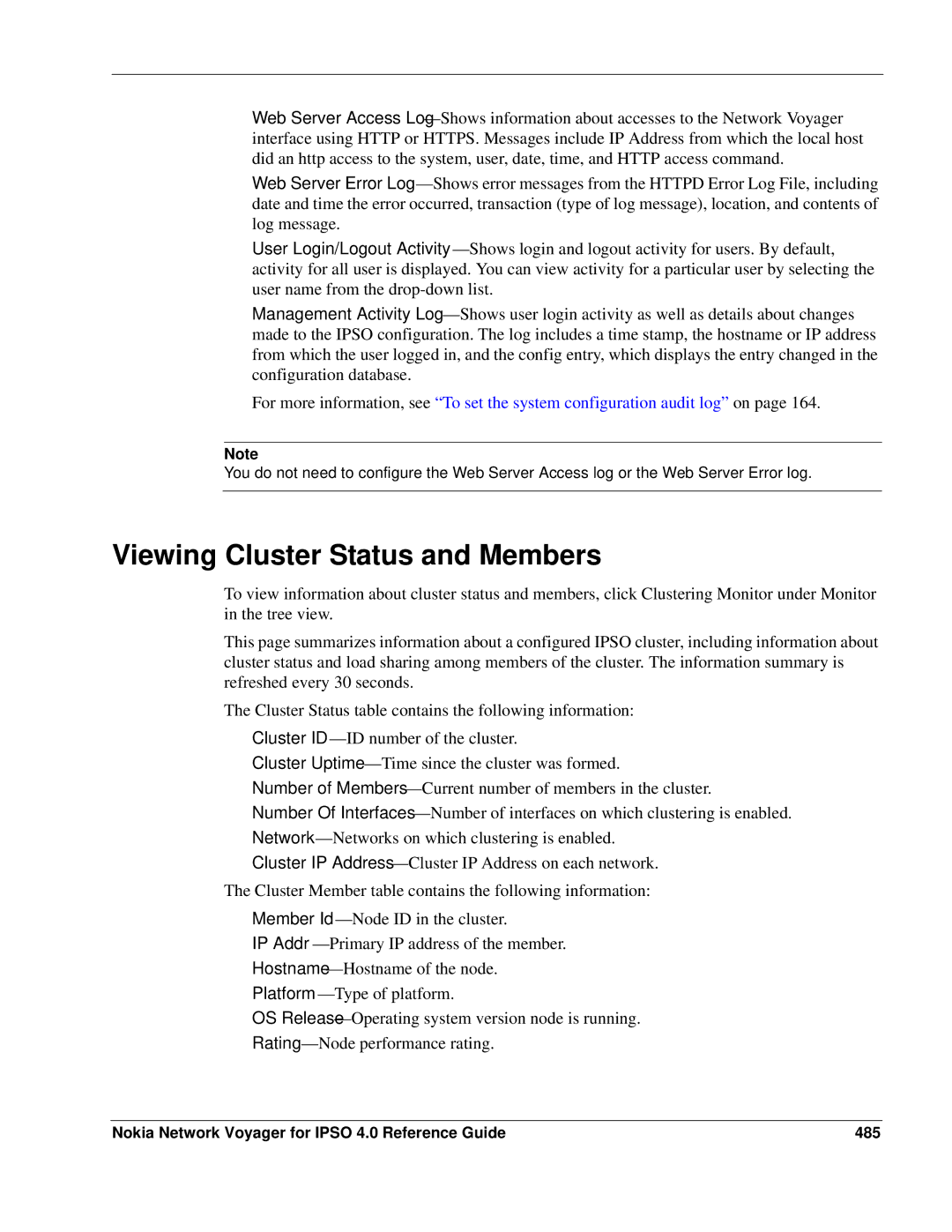
Web Server Access
Web Server Error
User Login/Logout
Management Activity
For more information, see “To set the system configuration audit log” on page 164.
Note
You do not need to configure the Web Server Access log or the Web Server Error log.
Viewing Cluster Status and Members
To view information about cluster status and members, click Clustering Monitor under Monitor in the tree view.
This page summarizes information about a configured IPSO cluster, including information about cluster status and load sharing among members of the cluster. The information summary is refreshed every 30 seconds.
The Cluster Status table contains the following information:
Cluster
Cluster
Number of
Number Of
Cluster IP
The Cluster Member table contains the following information:
Member
IP
OS
Nokia Network Voyager for IPSO 4.0 Reference Guide | 485 |
